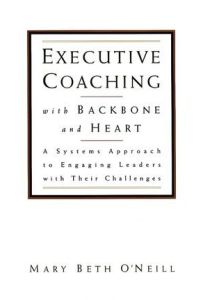Join getAbstract to access the summary!

Join getAbstract to access the summary!
Mary Beth O Neill
Executive Coaching with Backbone and Heart
A Systems Approach to Engaging Leaders and Their Challenges
Jossey-Bass, 2000
What's inside?
How do you coach the guy at the top?
Recommendation
Mary Beth O’Neill describes how executive coaches need to work with executives as partners to help them become better leaders. Coaches need the strength to share the truth with clients in times of crisis, she explains. She discusses the core principles that underlie coaching and the four essential phases of the coaching process: contracting, planning, live-action intervening and debriefing. The book is primarily directed to coaches, including consultants and internal or external trainers, who facilitate processes and projects in organizations. While it has its share of fuzzy and jargon-laden patches, the book is generally clear and to the point. It includes a mix of examples, charts, and step-by-step techniques, plus useful chapter highlights. getAbstract recommends this book to coaches, to executives who are coaching employees and to executives who are being coached.
Summary
About the Author
Mary Beth O’Neill is a senior consultant for the LIOS Consulting Corporation at the Leadership Institute of Seattle at Bastry University. She has successfully coached CEOs, senior executives, plant managers, first line supervisors and other leaders for 20 years. She also teaches courses in executive coaching, management of organizational change, change agent and consulting skills, action research, creation of business goals and measures, and systemic intervention in organizations.
















Comment on this summary